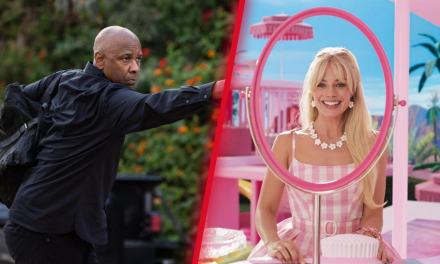Netflix’s gothic murder mystery, The Pale Blue Eye, sounds like a smash hit on paper: A detective (played by Christian Bale) teams up with pre-fame Edgar Allan Poe (Harry Melling) to hunt a killer and solve a string of gruesome murders. It’s a premise ripe for high tension, spooky thrills, and gothic ambiance. Yet somehow, the film never lives up to its potential.
The Pale Blue Eye begins with Bale’s Augustus Landor arriving at West Point for an investigation. A cadet has hanged himself – and then sometime after, someone cut out his heart from his body. (Are you feeling the Poe connection yet?)
Upon interviewing some other cadets and investigating the body, Landor comes to the conclusion that this death only looks like a suicide. But actually, Landor suspects foul play. His interrogations lead him to cross paths with one Edgar A. Poe, another cadet at West Point. Poe proves himself observant and a bit of a sleuth himself; so, Landor asks him to assist on the case.
As the story unfolds, we wind up with a second dead cadet, heart also removed. Then, a third goes missing.
Again, it all sounds appealingly grim and mysterious on paper. But when actually watching The Pale Blue Eye, things just seem to fall flat. Sure, the flat, wintry visuals and deaths lend to the bleak setting… but it’s also just so slow and boring.

The Pale Blue Eye lacks the thrills and intrigue that usually drive a mystery forward. (There’s a killer on the loose, and we don’t know when – or who – they will strike next!) And true, we don’t know who the next victim will be in The Pale Blue Eye. But we learn so little about the characters outside Landor and Poe that it’s hard to feel attached enough to be very concerned for anyone’s safety in particular.
And worse, we also never really get the impression that Landor and Poe as investigators are at risk. There’s no threatening messages from the killer or near-miss brushes with death. No one goes out on a dangerous limb in the pursuit of the truth. (The most “rule breaking” happens when Poe stays out late after curfew.) I guess this is sort of explained in the (in my opinion, lackluster) ending… but it certainly made the journey to get to that ending less compelling.
At times, I felt like I forgot that there even was an investigation going on. Like I mentioned before, The Pale Blue Eye doesn’t do much to expand on its supporting characters. And when you don’t do that, it’s hard to create an interesting mystery narrative full of misleads, red herrings, and exonerated suspects.
(At one point Landor looks at a room full of people and says “I suspected all of you at some point.” It would have been nice if the film actually led the audience to suspect each of these individuals, too.)

That said, a good mystery often hangs itself on its final act: the dramatic reveal where pieces we might not have even noticed suddenly fall into place. The Pale Blue Eye sets up an intriguing enough story, then slowly wears you down into not caring as it progresses. With a killer (excuse the pun) final act, it could still hold its own as a film.
Unfortunately, that’s not what the film delivers.
The mystery is solved – and then, twist – re-solved, in a manner that comes off jumbled and melodramatic. It doesn’t feel like the puzzle pieces combined naturally into one big picture so much as the last few pieces were jammed together regardless of shape so it could be called finished. The Pale Blue Eye offers a decent gothic aesthetic and solid performances, but the mystery itself disappoints – and that makes the 128-minute journey to the resolution feel like a waste. Quoth the Raven, “Nevermore.”
The Pale Blue Eye is in theaters now, and arrives on Netflix January 6.

![The Pale Blue Eye: This Poe-Inspired Mystery Just Doesn’t Deliver [Review]](https://www.thathashtagshow.com/wp-content/uploads/2023/01/pale-blue-eye-review-1200x640.png)


![‘That Dirty Black Bag’ A Gritty Modern Take On The Spaghetti Western [Non-Spoiler Review]](https://www.thathashtagshow.com/wp-content/uploads/2022/03/that-dirty-black-bag-440x264.jpg)
![Ghostbusters: Frozen Empire – Leaner, Meaner, And More Fun [Review]](https://www.thathashtagshow.com/wp-content/uploads/2024/03/431382561_1188664319176051_989102127683726750_n-440x264.jpg)
![Queer As Folk – Babylon Is Back [REVIEW]](https://www.thathashtagshow.com/wp-content/uploads/2022/06/queer-as-folk-review-440x264.png)